Exploring Ohio's Diverse Wildlife: Species and Habitats
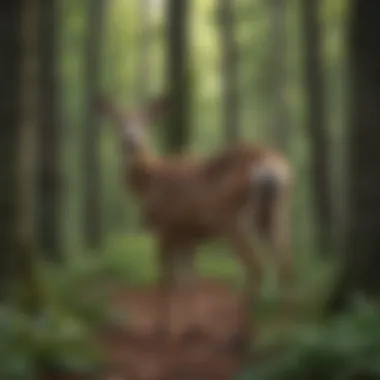
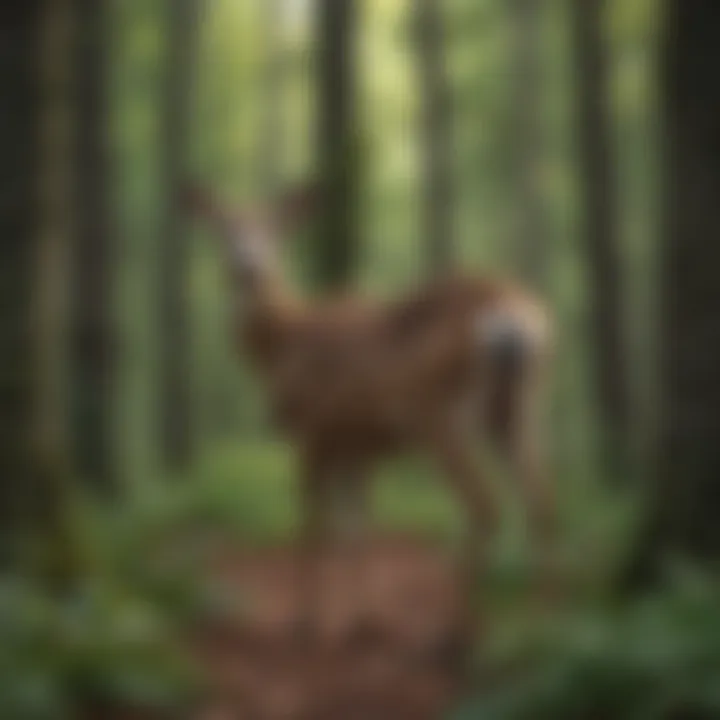
Nature Topic Overview
Dive right into the heart of Ohio, where a rich tapestry of wildlife sprawls across diverse landscapes! This state boasts everything from lush forests to serene wetlands, all teeming with fascinating creatures. You'll find white-tailed deer bounding through the woods, bright blue jays flitting about, and the ever-elusive bobcat prowling its territory. This exploration is not just about identifying animals but understanding their roles in the ecosystem, their unique behaviors, and the delicate balance of nature they uphold.
Understanding these magnificent creatures helps us appreciate the intricate web of life in Ohio. Whether you're a curious kid, a parent eager to learn, or a teacher trying to spark interest in the classroom, there’s something for everyone here. By examining the habits and habitats of these animals, we gain important insights into how to coexist with them peacefully and protect their environments.
Fun Facts and Trivia
Here are some fun nuggets about Ohio's wildlife that will make learning a blast:
- Did you know that Ohio is home to over 700 species of animals? That's a whole lot of critters!
- The Eastern Box Turtle can live for over 100 years. Talk about a long life!
- Ohio's wild turkeys were almost extinct in the 1950s, but thanks to conservation efforts, they are now common again.
"Each species plays a vital role in its habitat. Protecting wildlife means protecting ourselves!"
Visual aids like pictures or videos of these animals can make these facts stick in the minds of young learners. Interactive quizzes or fun puzzles can also enhance their engagement. Try out some wildlife-themed crossword puzzles or matching games to keep the excitement alive!
Wildlife Explorations
Let’s venture into Ohio’s wilderness and meet some of its wild animals!
White-tailed Deer
Graceful and gentle, these deer roam in wooded areas and fields. They are known for their beautiful antlers, which grow back each year after shedding. White-tailed deer play a significant role in controlling plant populations and help maintain the diversity of their habitats.
Red Fox
With its striking reddish fur and wagging tail, the red fox is a familiar sight in Ohio's forests. Foxes are clever hunters, often catching small animals and even scaring off pests. Their playful demeanor makes them a delight to observe, especially during dawn or dusk.
Great Blue Heron
This tall, wading bird can be spotted near ponds and lakes, standing still while waiting to catch fish. The great blue heron is a master fisherman, using its sharp beak to grab lunch swiftly. Watching these birds in their natural habitats is both peaceful and exhilarating.
Environmental Awareness
Ohio's wild animals are more than just sights to see; they are crucial for the environment's health. Each species contributes to its ecosystem—be it through pest control, pollination, or seed dispersal. It is essential for kids to understand the importance of conserving these species and their habitats.
Here’s how young readers can make a difference:
- Start a Wildlife Journal: Write down observations of birds or animals spotted in your backyard or local park.
- Be Mindful: Always leave natural spaces better than you found them. Pick up trash and avoid disturbing wildlife.
- Share Knowledge: Tell friends and family about Ohio's creatures and why they matter.
DIY Nature Activities
Get hands-on with these fun nature projects:
Bird Feeder Craft
What you'll need:
- Empty milk jug
- Scissors
- Twine or string
- Birdseed
How to do it:
- Cut a few holes in the milk jug’s side, just big enough for a bird to access the seed.
- Tie the string around the handle of the jug for easy hanging.
- Fill the jug with birdseed and hang it in your backyard. Watch the birds flock!
Nature Scavenger Hunt
Create a list of items to find in nature—like acorns, a feather, or a pine cone. Take a walk with friends or family and see who can find everything first!
Learning about wild animals should be a journey filled with excitement and discovery. As young explorers, let’s cherish these creatures and do our part to protect their homes.
Preamble to Ohio's Wildlife
Ohio's wildlife is a treasure trove of natural beauty and complexity. This state hosts a wide range of ecosystems, each nurturing its own unique assembly of plants and animals. Understanding these elements is not just a leisurely pursuit; it’s essential. Learning about Ohio's wildlife enables us to appreciate the delicate balance of our ecosystems and the vital roles various species play in it.
Life in Ohio is a patchwork quilt of forests, wetlands, grasslands, and urban settings. Each patch supports a different array of wildlife. By delving into this vibrant world, children, parents, teachers, and caregivers can gain insights into the necessity of conservation efforts. Exploring these habitats also sparks wonder in the young ones, encouraging them to engage with nature and promote environmental stewardship.
Geographic Overview
Ohio is situated in the Midwestern region of the United States, blessed with diverse landscapes. From the rolling hills in the southeastern parts to the flat prairies of the west, each area has a story to tell regarding its wildlife inhabitants. The state is framed by Lake Erie to the north, which not only shapes the climate but also offers a corridor for migratory birds and aquatic life.
Key geographic features include:
- Forests: Rich deciduous forests blanket much of eastern Ohio, providing a home for foxes, deer, and various birds.
- Wetlands: Found in the north and along rivers, these areas teem with amphibians and migratory birds, showcasing nature’s diversity.
- Grasslands: The central parts of Ohio are marked by fields and prairies, where species like prairie dogs and various insects thrive.
This geographic inclusion aids in creating a mosaic of habitats that fosters a thriving wildlife population.
Importance of Ecosystems
Every creature in Ohio has a crucial role in its ecosystem. It is here that we witness interactions that are pivotal for both survival and balance. An ecosystem can be likened to a finely-tuned engine. If one part falters, it often affects the entire machine.
- Food webs: From tiny insects that pollinate plants to apex predators like the red fox, all species contribute to the food chain.
- Pollination: Many wildflowers, important for food sources, rely on bees and butterflies for reproduction.
- Natural filters: Wetlands function as natural sponges that absorb excess rainfall, preventing flooding and maintaining water quality.
Understanding these connections can inspire communities to protect local wildlife and ultimately lead the charge for conservation. By appreciating how ecosystems function, young audiences learn the significance of each species and the habitats they call home.
Key Habitats for Wild Animals
Understanding the key habitats where wild animals thrive is crucial for appreciating Ohio's rich biodiversity. Each habitat type plays a distinct role in supporting various species. From the towering forests to the lush wetlands and sweeping grasslands, these environments offer essential resources such as food, shelter, and breeding grounds. Grasping how these habitats interact with wildlife helps highlight the intricate web of life that exists in Ohio, urging us to protect these vital ecosystems so future generations can experience them.
Forests and Woodlands
Types of Forests
Ohio’s forests showcase a medley of ecosystems, each perfectly molded to meet the needs of diverse wildlife. The most notable types include deciduous, coniferous, and mixed forests. Deciduous forests, characterized by trees that shed their leaves in winter, such as oaks and maples, create a rich environment for species like deer and various birds. On the other hand, coniferous forests provide a year-round shelter, crucial for animals during harsh winters. Their evergreens serve as primary nesting sites, fulfilling a vital role in maintaining the local ecology.
For instance, the unique feature of deciduous forests is their seasonal beauty. With vibrant autumn foliage, they attract a host of wildlife preparatory to winter. However, a disadvantage can be the fragility of these ecosystems when invasive species take root. Recognizing and conserving these types can be a big step in ensuring healthy wildlife populations in Ohio.
Common Species Found
The species residing in Ohio’s woodlands contribute immensely to the ecosystem. Animals such as the Eastern gray squirrel and the American woodcock thrive in these habitats. They rely on the diverse vegetation for food and nesting, showcasing adaptability to their environment. Notably, the presence of these species signals a healthy habitat, as they require specific conditions to flourish.
Moreover, these common species are known as generalists, meaning they can live in various environments. This flexibility is advantageous, especially in changing climates. However, these generalists face challenges, like competition from invasive species, which can disrupt the delicate balance of the ecosystem. Being aware of these species helps in implementing measures to protect and maintain their habitats.
Wetlands and Marshes
Significance of Wetlands
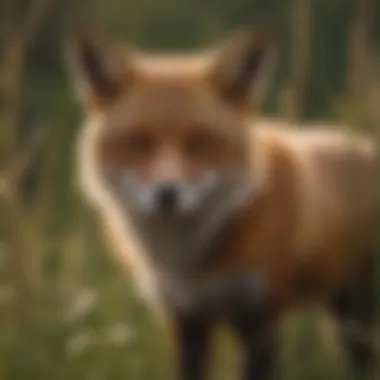
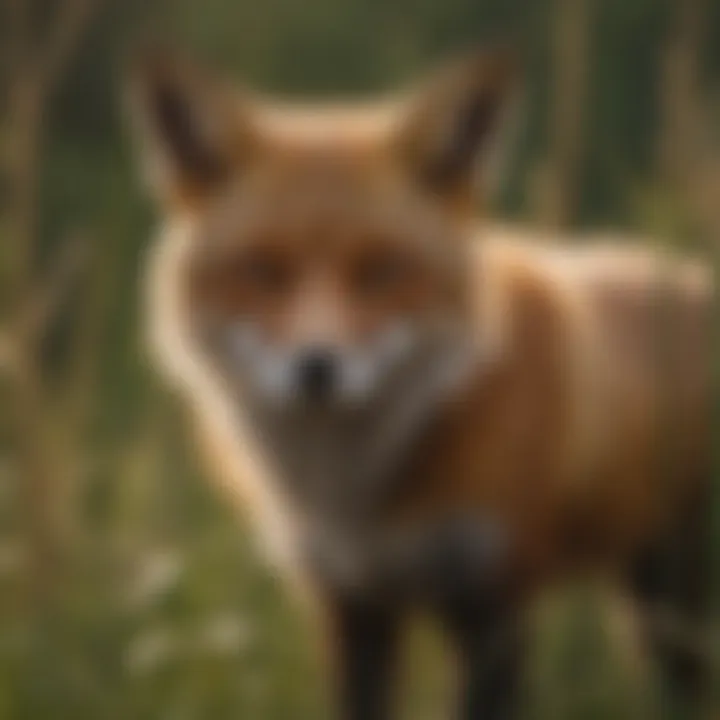
Wetlands in Ohio are often seen as the unsung heroes of the ecosystem. They serve as natural water filters, trapping pollutants and promoting clean water. This makes wetlands essential for maintaining a balanced environment. Additionally, these areas are crucial breeding grounds for numerous wildlife species, including amphibians and fish.
The unique feature of Ohio’s wetlands is their seasonality. Depending on rainfall, these areas can transform dramatically, affecting the wildlife that depend on them. For example, during high water periods, various migratory birds flock to these wetlands, utilizing them as resting spots. Balancing this dynamic environmental aspect is key in conservation practices to ensure the continued health of these systems.
Wildlife Adaptations
Wildlife in Ohio’s wetlands has developed fascinating adaptations. Species such as the Great Blue Heron are equipped with long legs for wading through shallow water while hunting for fish. Furthermore, amphibians like frogs have adapted their life cycles to take advantage of the wetland’s seasonal influx. These adaptations highlight the incredible resilience and versatility of wildlife in fluctuating environments.
However, a challenge posed by wetlands includes their vulnerability to climate change and pollution, which threaten both the water quality and the species relying on these habitats. Protecting these areas means understanding and preserving the unique adaptations of the wildlife within.
Grasslands and Prairies
Wildflowers and Insects
Ohio’s grasslands burst with colors from various wildflowers like coneflowers and black-eyed Susans. These vibrant plants not only beautify the landscape but also play a pivotal role in supporting pollinator populations, such as bees and butterflies. Wildflowers are the lifeblood for many insects, providing nectar and pollen essential for their survival. This interdependence between flora and fauna creates a self-sustaining ecosystem that supports biodiversity.
The drawback is that many of these grassland plants are sensitive to overgrazing and habitat destruction. Identifying ways to protect and restore these areas ensures that both wildflowers and the insects that depend on them can thrive.
Mammals of the Grasslands
Focusing on the mammals that roam Ohio's grasslands reveals a rich variety of adaptations for survival. Animals like the Eastern Cottontail Rabbit and the Prairie Vole play crucial roles in the grassland ecosystem. Their diets primarily consist of grasses and other plants, making them key herbivores that help maintain plant growth.
These grassland mammals often exhibit burrowing behaviors, which provide shelter not just for themselves but for a range of other species as well. This unique symbiotic relationship underscores the benefits of preserving grassland habitats. However, habitat fragmentation due to urban development poses a significant threat, underscoring the need for focused conservation efforts in these areas.
"Conserving Ohio’s wild habitats is not just about protecting wildlife; it's about ensuring a balanced ecosystem that benefits all."
By examining these key habitats, we not only gain insight into the diverse wildlife of Ohio but also the critical roles the environment plays in fostering life. Understanding what each habitat entails is the first step towards effectively protecting and preserving Ohio's natural treasures.
Iconic Mammals of Ohio
Mammals are a big part of Ohio's diverse wildlife, representing a spectrum of characteristics, behaviors, and ecological roles. Each species has its own unique set of traits that helps to manage the ecosystem in its own way. From foraging to reproduction, these creatures contribute significantly to maintaining the balance of nature in Ohio. Understanding these mammals is crucial for education and conservation efforts, especially among younger learners who are just beginning to explore the natural world.
White-tailed Deer
Habitat and Diet
White-tailed deer are perhaps the most recognizable mammals in Ohio, often seen grazing in fields or quietly moving through dense woodlands. They thrive in mixed deciduous forests, which provide ample food sources such as acorns, leaves, and grasses. Deer are known as browsers, meaning they prefer to feed on varied vegetation rather than just one type. This adaptability in diet is beneficial since it allows them to survive in changing habitats and seasons.
The ability to shift their diet opens up many locations where they are able to find food, which aids in their population stability. However, their feeding habits can lead to over-browsing, which threatens the growth of young trees and underbrush, creating a delicate balance. Their role as herbivores makes them significant for forest maintenance while illustrating life's interdependent nature.
Behavioral Traits
White-tailed deer exhibit fascinating behaviors that reflect their adaptability and instincts. Primarily crepuscular (active during dawn and dusk), these creatures have developed acute senses to evade predators while searching for food. They use a combination of keen eyesight, superior hearing, and a highly developed sense of smell, enhancing their survival chances.
Furthermore, their social behaviors revolve around hierarchy within herds, especially during mating season when males display fighting techniques to establish dominance. This competition plays a key part in ensuring that the strongest genes are passed down, providing an impressive strategy for natural selection. However, the impact of human encroachment is significant here, as urban development challenges their traditional behaviors.
Northern Raccoon
Nocturnal Activities
The northern raccoon is another key mammal symbolizing Ohio's wildlife. Known for their bandit-like appearance, these critters are primarily nocturnal, meaning they come alive at night. This lifestyle allows them to avoid many predators that are active during the day. Raccoons use their dexterous front paws for a variety of activities— from climbing trees to finding food in the most unexpected places.
Their adaptability to urban life, rummaging through trash cans in search of food, shows their cleverness. This nocturnal activity can be advantageous, as it opens them up to a multitude of feeding opportunities during a time when fewer competitors are around. However, it can also lead to conflicts with humans, as these sneaky foragers sometimes find themselves in sticky situations, prompting the need for effective wildlife management strategies.
Intelligence and Adaptability
Raccoons are known for their impressive intelligence, which is quite evident in their problem-solving capabilities. Their ability to learn and remember solutions to tasks is remarkable. This intelligence allows them to adapt quickly to changing environments, whether that's a forest or a bustling city.
Their memory plays a crucial role in survival, giving them the capacity to remember where food sources are located or to recognize patterns in human behavior. Although these traits prove advantageous, they also pose challenges as raccoons can outsmart many human barriers designed to protect food supplies. Thus, nurturing understanding towards cohabitation with raccoons can foster better wildlife-human relationships.
Ohio's Fox Species
Red Fox
Among Ohio's iconic mammals, the red fox stands out for its vibrant coloration and cunning nature. Found across diverse habitats, including forests, grasslands, and suburban regions, they are highly adaptable. Their diet chiefly consists of small mammals and, during certain seasons, fruits and berries. This flexibility in diet is a defining feature, ensuring their survival regardless of environmental shifts.
Red foxes are renowned for their bushy tails and keen hunting skills. Their ability to stalk quietly until they pounce showcases their predatory expertise. However, they can struggle competing against larger predators, leading to avoidance or clever tactics— exemplifying their intelligence in survival.
Gray Fox
On the other hand, the gray fox has distinct climbing skills that set it apart from its red counterpart. Their preferred habitats include wooded areas, with a diet similar to the red fox, but they exhibit more omnivorous tendencies. They commonly consume small mammals, birds, and fruit, illustrating their adaptability.
Unlike the red fox, gray foxes often climb trees to escape threats or hunt prey. This unique behavior increases their survival odds and accounts for their less frequent sightings. It’s a brilliant adaptation for navigating both forest floor and canopy, showcasing the variety within Ohio’s mammal community.
In summary, each iconic mammal in Ohio serves a unique role within the ecosystem. Understanding these creatures helps promote a healthy coexistence and emphasizes the importance of wildlife conservation.
Birds Commonly Found in Ohio
Birds play a crucial role in the ecosystems across Ohio. Their presence contributes to pest control, pollination, and seed dispersal, making them key players in maintaining ecological balance. Observing these birds can be a delightful experience for children, parents, and educators alike. Not only does it instill a sense of wonder about nature, but it also encourages outdoor activity and appreciation for wildlife.
Songbirds and Their Songs
Common Species Overview
Songbirds are some of the most recognizable birds in Ohio. They are known for their varied and melodious songs that fill the air, especially during the spring. Species like the American Robin, Northern Cardinal, and Indigo Bunting are prevalent. These birds are often seen fluttering around backyards, parks, and forests.
The American Robin, with its bright orange belly, is a favorite among many. It's not just their vibrant color; their song heralds the arrival of spring for many Ohioans. They help in controlling insect populations and also serve as an excellent indicator of the health of the local environment. Another well-known songbird, the Northern Cardinal, is famous for its striking red plumage and beautiful whistled tunes. These birds' cut short, sweet musical phrases can uplift anyone's mood simply by their presence.
However, it's important to note that while many enjoy the cheerful sounds of songbirds, some may find their early morning songs a bit jarring. Still, many appreciate the natural alarm clock these birds provide.
Role in Ecosystems
Songbirds play a vital role in the health and functionality of ecosystems in Ohio. They are not just pretty faces; they actively engage in pest control by feeding on insects, thus regulating those populations. Additionally, songbirds contribute to plant reproduction through their role in seed dispersal. This means they help spread native plant seeds across different habitats, fostering biodiversity.
What's more, these birds act as indicators of environmental health. A decline in songbird populations can signal that something is amiss in the ecosystem, whether from pollution, habitat destruction, or climate change. Keeping an ear out for their songs may alert us to these changes and encourage us to take action when we hear silence where there once was a cheerful chorus.
Birdwatching Essentials
Best Locations
For budding ornithologists, knowing where to spot birds is half the battle. Ohio boasts an array of prime birdwatching locations. Places like the Cuyahoga Valley National Park and Magee Marsh are top-tier spots. Here, migratory songbirds can be seen in droves during spring and fall.
In urban areas, local parks can also be a treasure trove of avian life. Columbus Park of Roses is known for its extensive gardens and diverse bird population. These locations are often easily accessible and can make for wonderful family outings, combining leisure with education.
Tools and Techniques
Equipping oneself for birdwatching starts with a good pair of binoculars. Binoculars allow for close-up views of birds while maintaining a respectful distance. A field guide or a mobile app can be beneficial to identify the species you spot. Apps like Merlin Bird ID or iBird can help users identify birds based on location and sightings.
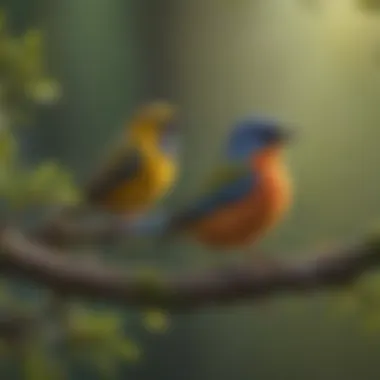
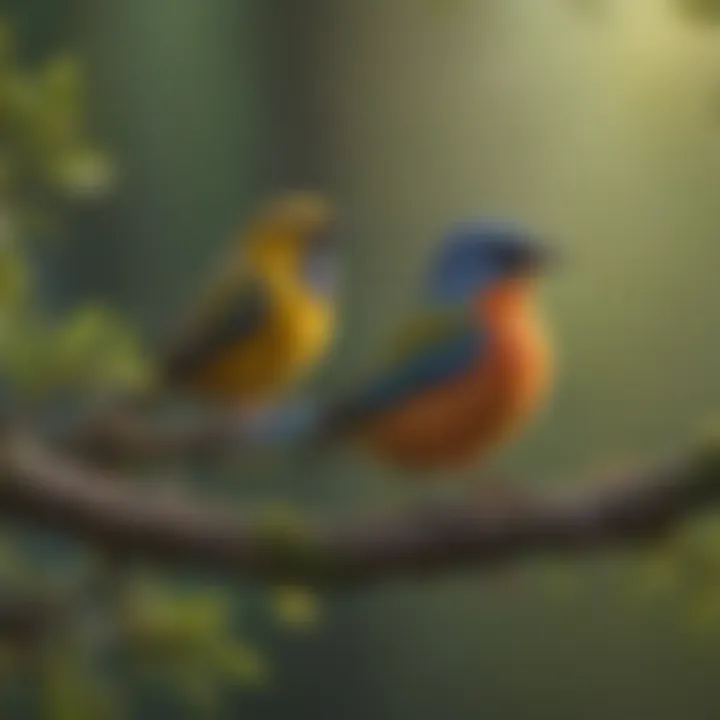
Word of mouth about local birdwatching tips can also elevate the experience. Listening to seasoned watchers can introduce newcomers to the nuances of birdwatching. However, it’s crucial to respect wildlife and maintain a safe distance to avoid disturbing them. This respect ensures that these birds can continue to thrive, providing joy and wonders for future generations.
Reptiles and Amphibians of Ohio
Reptiles and amphibians often get overlooked, yet they're vital to Ohio's ecosystems. These cold-blooded creatures act as indicators of a healthy environment. In many cases, they help control insect populations and serve as prey for larger animals. In this section, we will dive into the fascinating world of Ohio's native snake species, frogs, and toads.
Native Snake Species
Identification Tips
Identifying snakes can be tricky! One key aspect to look for is the patterns on their skin. Some snakes have bands, while others might be solid-colored. For example, the Eastern garter snake is easily recognized due its checkered pattern. Understanding these visual features helps not only in recognizing snakes but also in knowing which ones are harmless versus those that might be venomous. This knowledge is crucial when adventuring outdoors in Ohio.
It's also helpful to know the typical habitats of these snakes—some prefer wetlands while others hang out in grassy areas. Being aware of these traits can make spotting these snakes a fun and educational activity.
Ecosystem Impact
Snakes play a substantial role in maintaining balance within ecosystems. They help keep rodent populations in check, which is essential for agriculture and preventing the spread of disease. This aspect of their contribution showcases why they are worth protecting. When snakes thrive, so do the habitats they live in, supporting a diverse array of life.
However, snake populations are dwindling in certain areas due to habitat destruction and overhunting. This makes understanding their role even more important for conservation efforts.
Frogs and Toads
Breeding Behaviors
Frogs and toads have unique mating rituals that are fascinating to observe. Male frogs often sing to attract females, creating a symphony of sounds across wetlands and ponds during breeding season. This auditory display not only showcases their health but also signals their vigor to potential mates. It teaches us a lot about animal behavior, making it an engaging topic to explore in the field.
Some species, like the American toad, show interesting behaviors, such as laying thousands of eggs at once. While this might seem excessive, it increases the chances of survival for at least some of the offspring in a world filled with predators.
Conservation Concerns
Despite their importance, many frogs and toads face significant threats. Habitat loss due to urban development and pollution can devastate their populations. Additionally, climate change impacts breeding cycles and hibernation patterns. Awareness of these conservation concerns is essential not just for current wildlife but for future generations as well.
Understanding the challenges faced by these species can engage kids and adults alike in conservation efforts. Community outreach and educational programs can really help raise awareness and promote action to protect Ohio's unique amphibian populations.
Unique Invertebrates in Ohio
Invertebrates might not be the stars of the show when we talk about wildlife, but their presence in Ohio is nothing to sneeze at. They’re the unsung heroes of our ecosystems, performing crucial roles that keep the balance of nature intact. From pollinators to indicators of environmental health, these little creatures bring a wealth of benefits to Ohio’s diverse habitats. Understanding their importance helps us appreciate the intricate web of life and the necessity of conservation efforts for these often-overlooked animals.
Butterflies and Moths
Life Cycle
The life cycle of butterflies and moths is a fascinating journey that showcases one of nature's most remarkable transformations; starting from an egg, moving to a caterpillar, then to a chrysalis, and finally emerging as a stunning winged insect. This cycle, known as metamorphosis, is not just a spectacle but plays a vital part in their survival. The key characteristic of this life cycle is the drastic physical change, which allows these insects to occupy different ecological niches at various stages of their life. This adaptability is a major reason why they are a popular choice among young naturalists for study and observation.
One unique feature within the life cycle is how many caterpillars have specific host plants they rely on for nourishment. This not only highlights their connection to local flora but also showcases the intricate balance needed in ecosystems. However, reliance on particular plants can become a disadvantage, especially if invasive species take hold or habitats diminish, potentially leading to declines in butterfly and moth populations.
Pollination Role
Butterflies and moths do not just dazzle our eyes; they also play an important role in pollination. As they flit from flower to flower, sipping nectar, they carry pollen along, facilitating the reproductive processes of various plants. This key characteristic of their behavior not only supports the growth of flowers but is also critical for the production of fruits and seeds. With such a beneficial role, they become essential players in maintaining healthy ecosystems, which is a crucial topic for conservation discussions.
Moreover, many plants depend on specific species of butterflies and moths for effective pollination, meaning these insects help maintain biodiversity. A unique feature of their pollination role is that, while they are not as efficient as bees, their presence can significantly enhance the variety and number of flowering plants. Yet, the downside comes when habitat loss and pesticide use threaten their populations, impacting both the plants they pollinate and other species that rely on those plants.
Freshwater Invertebrates
Ecological Indicators
Freshwater invertebrates, like mayflies, caddisflies, and certain types of snails, serve as incredibly sensitive ecological indicators. Their populations can tell us a lot about the health of water sources in Ohio. When populations thrive, it often means water quality is good. Conversely, a significant drop in their numbers can be a red flag, suggesting pollution or habitat degradation. This key characteristic makes them a valuable choice for scientists and conservationists observing Ohio’s rivers and ponds.
Moreover, these indicators play a unique role in aquatic ecosystems too. Many freshwater invertebrates contribute to nutrient cycling by breaking down organic materials, which can ultimately support the food web. However, their sensitivity can also be a double-edged sword—their populations can fluctuate rapidly based on pollution levels and changes to their habitats, making them quite vulnerable.
Conservation Status
The conservation status of freshwater invertebrates is of increasing concern in Ohio. Many species face threats from habitat destruction, pollution, and climate change. Understanding their conservation status not only offers insight into the health of aquatic ecosystems but also raises awareness about broader environmental issues affecting all wildlife. This shows why it is a beneficial topic for our article; it engages the community and brings attention to our responsibility toward these creatures.
Particularly, certain species of freshwater invertebrates have been recognized as endangered or at risk, emphasizing the need for immediate conservation actions. Their unique feature lies in the potential they have to catalyze broader environmental restoration efforts. Protecting their habitats becomes essential not just for their survival but for maintaining the overall health of our water systems, which ultimately supports numerous other species, including fish, birds, and mammals.
The Role of Conservation Efforts
Wildlife conservation is the heartbeat of maintaining Ohio's rich biodiversity. The importance of conservation efforts goes well beyond preserving cute furry animals; it's about protecting entire ecosystems that support life. When we talk about conservation, we are really addressing how we, as a society, can ensure that future generations inherit a vibrant natural world. These initiatives encourage not just the conservation of large mammals, but also the foundational flora and fauna that sustain them.
Understanding Conservation Programs
Conservation programs in Ohio are a myriad of efforts sparked by a passion for preserving nature. They aim to combat the decline of wildlife populations and their habitats. Through these programs, various stakeholders engage in protecting endangered species and their ecosystems. In this section, we’ll delve into the specifics of statewide initiatives and community involvement that make conservation a collective endeavor.
Statewide Initiatives
Ohio’s statewide initiatives highlight collaborative efforts helping to cultivate awareness and action toward wildlife conservation. These programs typically include habitat restoration, species protection, and public education. A key characteristic of these initiatives is their base in science and research, helping shape well-informed conservation strategies.
One well-known program is the Ohio Department of Natural Resources, which works tirelessly on multiple fronts—restoration, education, and enforcement of laws that protect wildlife. One of the unique features of such initiatives is their adaptability; they evolve based on findings and changing environmental needs. This gives them a sustainable edge. However, it is crucial to be aware of the challenges, including funding constraints and political factors that may impact these efforts.
Community Involvement
Community involvement represents the grassroots side of conservation efforts, drawing in local people and organizations with a shared passion for wildlife. This aspect of conservation is vital because it fosters a sense of belonging and encourages individuals to take responsibility for their environment. Community events, like plantings and clean-up days, create opportunities for people to actively contribute to conserving nature.
A notable feature of community involvement is its educational component; citizens often learn about local wildlife and ecological balance, sparking interest and action. While community-based initiatives can be incredibly effective, they often rely on volunteer participation, which can fluctuate. Despite this variability, the outcomes can be immensely rewarding when communities come together for a common cause.
Threats to Ohio Wildlife
Despite all the noble efforts for conservation, Ohio wildlife faces significant threats that continue to jeopardize its very existence. Habitat loss and climate change are two major factors putting stress on Ohio’s ecosystems. Understanding these threats is essential for developing effective strategies to mitigate their impact.
Habitat Loss
Habitat loss is like a slow poison to wildlife. Land development for urban growth, farming, and infrastructure projects continues to encroach upon natural environments. As habitats shrink or disappear, animals lose their homes, food sources, and breeding grounds. One of the notable impacts of habitat loss in Ohio is the decline in species like the Eastern Massasauga rattlesnake, which is now classified as a threatened species.
This issue highlights the importance of land-use planning that accommodates both development and conservation. The push for ensuring wildlife corridors, which allow animals to migrate safely, is a response to this pressing issue. However, addressing habitat loss requires a sustained public commitment and long-term vision.
Climate Change Effects
Climate change acts like a double-edged sword, affecting wildlife in multiple ways. In Ohio, it leads to altered habitats, migration challenges, and disrupts local weather patterns. Animals that rely on specific seasonal cues for migration or breeding may find themselves struggling to adapt to changing climates. For instance, birds that migrate might arrive too early or too late for their food sources, throwing their lifecycle out of balance.
The state has initiated various climate adaptation strategies to maintain stability in ecosystems, but it's a race against time. It’s crucial for everyone to understand how our actions today affect the climate tomorrow—a collaborative future is mandatory to combat these environmental challenges.
"Conservation is a state of harmony between men and land." – Aldo Leopold
By educating ourselves and taking action, we can contribute to maintaining the delicate balance of Ohio’s wildlife and natural habitats.
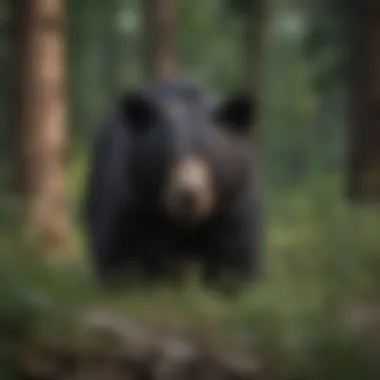
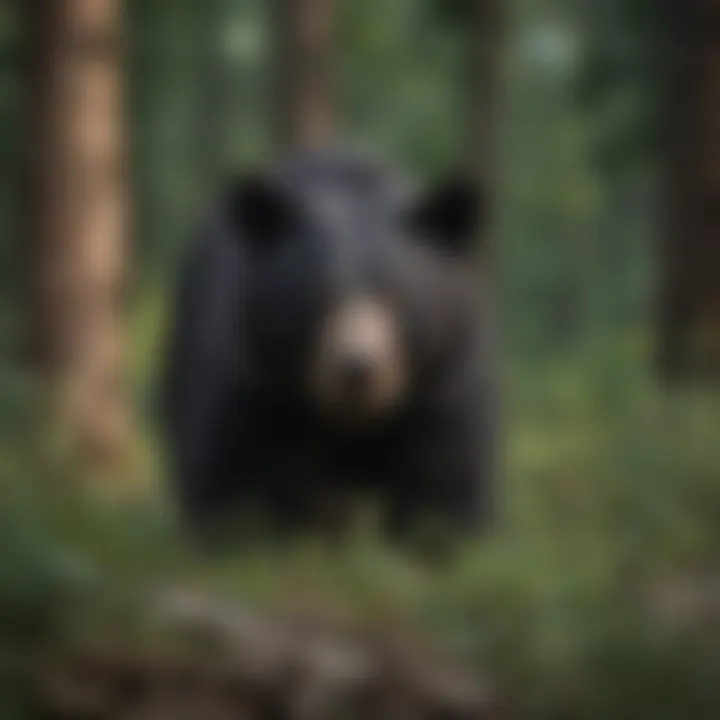
Tips for Safe Wildlife Observation
Observing wildlife is a thrilling way to connect with nature, but it comes with its share of responsibilities. Actively engaging with Ohio’s diverse animal life can spark curiosity in children and help educate them about ecosystems. Knowing how to do this safely ensures that both wildlife and humans can coexist peacefully. Here are some guidelines that can enhance this experience.
Best Practices for Nature Walks
Minimizing Disturbance
When you're out in nature, the goal is to appreciate and respect wildlife. Minimizing disturbance means being careful not to disrupt animals in their natural habitat. This is crucial because animals can become stressed by human presence. For instance, if you walk too close to a deer, it might bolt, disrupting its feeding or breeding activities.
- Key Characteristics: These practices often include staying on marked trails and controlling your noise levels. This considerate behavior helps maintain the natural order.
- Why It Matters: By adopting these habits, we ensure animals remain comfortable in their environment. It protects their natural behaviors while allowing observers to witness wildlife in action.
- Unique Features & Advantages: One unique advantage of minimizing disturbance is increased likelihood of sightings. If animals don't feel threatened, they're more likely to go about their daily routines, giving observers a chance to learn and connect.
Using Binoculars Effectively
Having the right tools can elevate your wildlife observation game. Using binoculars effectively can extend your viewing distance without encroaching on animals' comfort zones. A decent pair of binoculars allows you to see fine details—like the vibrant colors of a bird's plumage or the intricate patterns of a deer's coat.
- Key Characteristics: Good binoculars have adjustable lenses for better clarity and come in various magnification levels. Many learners prefer ten-power magnification, which balances detail with a wide field of view.
- Why It’s Beneficial: Binoculars create opportunities for learning without causing disturbance. Kids can observe habits and behaviors from a responsible distance, making the connection with nature both educational and memorable.
- Unique Features & Advantages: Proper use of binoculars can further develop attentiveness in children, guiding them to observe nuances in animal behavior. Additionally, it promotes patience since it requires careful observation rather than hasty movements.
Identifying Signs of Wildlife
Understanding the signs of animal presence can enrich the experience far beyond just spotting animals.
Tracks and Scat
Tracks and scat are telltale signs of wildlife activity. These clues can reveal not only what animals are in the area, but also their size and sometimes even their age. For example, the size of a raccoon’s tracks can help distinguish it from a larger animal like a coyote.
- Key Characteristics: By paying attention to differences in shape, size, and depth, one can learn a lot. Scat, or animal droppings, can tell you what an animal has been eating, which informs you about their role in the ecosystem.
- Why It’s Popular: Identifying these signs piques curiosity. Kids might spend hours in a field trying to find and trace tracks. It ties them closer to the wildlife around them.
- Unique Features & Advantages: Following tracks can lead to exciting discoveries and ensures that the learning experience is active. This way, it becomes an engaging adventure rather than simply looking.
Vocalizations
Animals communicate through sounds, which is another essential sign of their presence. Vocalizations can tell you which species are nearby, and sometimes even indicate their mood or activity, like a call announcing territory or a warning cry.
- Key Characteristics: Birds, in particular, are known for their songs, but mammals like coyotes also partake in vocalization, particularly at night. Learning to recognize these sounds enhances one's ability to engage with nature meaningfully.
- Why It’s a Beneficial Choice: Understanding wildlife vocalizations enriches the observation experience. Kids can learn to listen intently, which fosters greater appreciation for the acoustic environment of Ohio’s wilderness.
- Unique Features & Advantages: This auditory aspect adds a dimension to wildlife observation that visuals alone cannot capture. Being able to recognize animal calls elevates one’s awareness and connection with their surroundings.
The Significance of Local Flora for Wildlife
When we talk about wild animals in Ohio, we can't overlook the role that local flora plays in their survival. Plants are not just pretty sights on a hike; they are essential players in the ecosystem. Local plants provide food and shelter to many species, forming the backbone of various food webs. Without these plants, many wild animals would find it difficult to survive. Hence, recognizing the significance of local flora in supporting wildlife is crucial for understanding how ecosystems work and maintaining biodiversity.
Food Sources for Animals
Native Plants Versus Invasive Species
Native plants have adapted to Ohio's specific climate, soil, and wildlife over many seasons. They form a perfect partner for Ohio's animals, as they provide familiar food sources that many creatures rely on. Take for example the amazing milkweed; it's not only a favorite of the colorful monarch butterfly, but it also supports various other insects. On the flip side, invasive species like honeysuckle can disrupt those natural relationships. They grow rapidly, spread quickly and may choke out our native greenery.
The key characteristic of native plants is their ability to thrive in local conditions, offering a stable and nutritious food source. They usually bring many benefits, like attracting pollinators and offering seeds and berries for birds. Meanwhile, invasive plants often lack those same qualities. This makes native flora a much better choice for maintaining the health of Ohio's wildlife.
Seasonal Availability
Ohio experiences changing seasons, and this directly affects the availability of food for animals. Some plants bloom and bear fruit at different times of the year. For instance, wild sunflowers in the summer attract a variety of birds, while the fruit of serviceberry ripens in late spring for animals that need nourishment at that time.
The unique feature of seasonal availability is its rhythm. It tells us that the flora and fauna exist in a delicate dance, where good timing is everything. If animals can rely on plants that are reliably available, they'll thrive. Plants that only bloom during a fleeting season might offer a short-term feast but can lead to tough times when their food runs out in the off-seasons. Thus, maintaining consistent food sources throughout the year is vital for wildlife survival across Ohio's varied habitats.
Shelter and Nesting Habitats
Tree Species and Wildlife Associations
Trees provide more than just shade. They are essential habitats for countless species: birds, insects, and mammals alike find shelter in their branches and trunks. For example, red oaks are popular among woodpeckers for drilling holes while squirrels nest snugly in their canopies. The association between tree species and wildlife is strongly interlinked, as specific trees support specific wildlife.
The key takeaway? Trees offer security and location for nesting, which is crucial for the reproductive success of many wildlife species. Without a variety of these trees, many birds would struggle to find appropriate places to raise their young. However, with too many invasive species littering the forests, the number of native trees can dwindle, threatening all the animals that depend on them. Thus, caring for tree diversity is crucial to keep wildlife thriving in Ohio.
Wetland Plants and Animal Shelter
Wetlands like marshes and swamps are home to a rich variety of flora that provide much-needed shelter for many animals. Plants like cattails and sedges not only stabilize the soil but also create nooks and crannies perfect for frogs and insects to hide away from predators. These plants create a labyrinthine refuge, contributing to a highly complex ecosystem that benefits countless creatures.
The key characteristic of wetland plants is their ability to manage water. They help clean the environment and provide various homes for animals. Without them, many species would lose shelter, leading to population declines. Maintaining healthy wetlands means ensuring that the plants within them can thrive, and that in turn supports numerous wildlife populations.
Ultimately, understanding how native flora supports Ohio's wildlife is critical for conservation efforts. This rich interplay between plants and animals nurtures the vibrant ecosystems we cherish in the state. As kids learn about these connections, they can discover their roles in protecting and preserving Ohio's natural treasures.
Engaging the Next Generation in Wildlife Protection
Addressing wildlife conservation is a matter that can’t wait. Engaging the younger crowd sets the foundation for a future teeming with respect and love for the planet’s biodiversity. Why is this important? Young minds are like sponges, ready to soak up knowledge and experiences that shape their understanding of nature. When they cultivate a bond with wildlife, this affinity can sow the seeds for lifelong stewardship of our natural resources.
Besides, learning about local fauna can spark awareness of broader ecological issues, urging these kids to not only cherish Ohio's wildlife but to think globally. Ultimately, the aim here is not merely to educate but to inspire actionable change, ensuring that our natural landscapes are preserved for the generations to come.
Educational Programs for Kids
Nature Clubs and Camps
Nature clubs and camps present an engaging opportunity for kids to connect with their environment. They offer a hands-on learning experience that shifts the focus from dull lectures to active participation. These programs often include activities like birdwatching, scavenger hunts, and species identification. Kids get to discover their surroundings in a fun and interactive way, leading to deeper understanding and appreciation of Ohio’s rich biodiversity.
A key characteristic of nature clubs is community involvement. Parents, local experts, and volunteers often collaborate to facilitate sessions. This creates a sense of belonging and promotes teamwork—a vital element in effective conservation. Unique features of such camps may include partnerships with local parks or nature centers which enhance the educational content while providing professional mentorship from wildlife specialists.
However, while these programs are beneficial, they may also come with some challenges. Logistics can be a hurdle; arranging transportation or coordinating schedules may require time and effort from organizers. Nonetheless, the advantages, such as the experiential benefits and building lifelong connections with nature, often outweigh the drawbacks.
Field Trips and Workshops
Field trips and workshops serve as a gateway for kids to experience wildlife up close. These excursions provide first-hand encounters with ecosystems that textbooks can only describe. Often, these activities are designed to complement school curricula, reinforcing environmental education in a striking fashion. It’s not just about seeing animals; it’s about understanding their habitats and the balance of ecosystems.
One significant characteristic of these trips is their interactive nature. Kids might get to engage in data collection, learning about everything from animal behaviors to plant biology. A unique offering could be guided tours by conservationists or experienced educators. This provides insight that is both in-depth and relatable.
However, challenges exist. Costs can escalate, especially with transportation or entrance fees for various sites. But with proper funding or community support, these opportunities can flourish, leading to a greater understanding and respect for local wildlife.
Encouraging Outdoor Activities
Gardening for Wildlife
Gardening for wildlife is a hands-on approach that blends science with creativity. It allows children to actively participate in creating habitats that benefit various species. By planting native flora, kids not only enjoy the beauty of blooming plants but also help to attract pollinators like butterflies and bees. Furthermore, they gain a sense of ownership and pride in nurturing life.
The core characteristic of wildlife gardening is its focus on native plants. These species are well-adapted to the local climate and provide food and shelter for resident wildlife, making gardens effective little ecosystems. Unique features of wildlife gardens include features like bee hotels or bird feeders, giving kids additional ways to engage with the animals.
Despite its numerous advantages, there can be misconceptions regarding maintenance. Some may think that these gardens demand excessive effort or resources. In reality, with thoughtful planning, they can be relatively low-maintenance, enhancing a family’s outdoor space while benefitting local wildlife.
Citizen Science Projects
Citizen science projects empower individuals to contribute to real-world scientific research, making them a wonderful way to engage children. By participating in monitoring wildlife populations or recording data on local flora, youngsters develop analytical skills while contributing to ongoing studies. This involvement creates a tangible connection with ecological research.
A key feature of these projects is accessibility—many can be done from home or in local neighborhoods, making it easy for families to participate. Unique aspects often include platforms where findings can be submitted online, promoting a sense of contribution to larger conservation goals.
Nonetheless, one must consider the time commitment involved. Relying on volunteers can sometimes lead to varying levels of engagement. However, the educational aspects and pride of contributing to science can make any time investment worthwhile.
Involve the next generation in wildlife protection to cultivate informed stewards of our natural world. Their engagement today can ensure the resilience of our ecosystems tomorrow.
In summary, engaging the next generation through educational programs, outdoor activities, and actively involving them in conservation efforts isn’t just beneficial; it’s crucial. The skills, knowledge, and appreciation they gain today will carry forward to safeguard Ohio's wildlife and ecosystems in the future.







